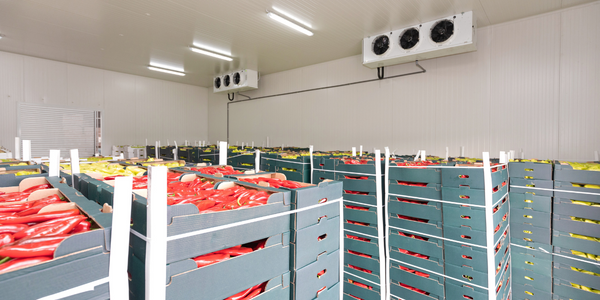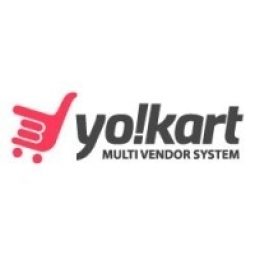Technology Category
- Analytics & Modeling - Computer Vision Software
- Platform as a Service (PaaS) - Application Development Platforms
Applicable Industries
- E-Commerce
- Transportation
Applicable Functions
- Logistics & Transportation
- Procurement
Use Cases
- Last Mile Delivery
Services
- Training
About The Customer
Kilakitu's customers are the people of Burundi, a country where e-commerce is still very new. The customers are not used to paying upfront for any product until they have their hands on it. Also, the sellers in the country have a mental block for exposing their products and prices to the competition, so they are initially unwilling to come onboard an e-commerce platform. However, Kilakitu's unique selling proposition of cheaper prices and home delivery, coupled with their cash on delivery model, has helped to build trust with their customers and sellers.
The Challenge
Kilakitu, the first online marketplace platform in Burundi, was established with the vision of transforming the shopping preferences of the people in the East African nation. The founder, who had experienced the convenience of online shopping in developed countries like the US and India, wanted to introduce the same experience to the people of Burundi. However, the challenge was that Burundi is one of the poorest countries in the world, with around 50% of the population lacking access to a smartphone. This made identifying the target market audience a huge task, causing most e-commerce startups not to be financially viable. Furthermore, less than 5% of the population were online shoppers due to a lack of know-how to use e-commerce platforms.
The Solution
To overcome these challenges, Kilakitu adopted a two-pronged approach. Firstly, they embarked on a rigorous campaign to educate the population about the value of their platform and how to utilize it. This was done through digital marketing and physical campaigns. Secondly, they chose YoKart as their e-commerce solution. YoKart is a complete solution for any e-commerce startup that provides most of the functionalities required to get started. However, due to the location of the business operations, a few additional integrations were required, such as local payment plugins, delivery tracker, messaging plugin and a few more. These were all provided and assisted to be incorporated by the YoKart team itself which facilitated the whole startup process.
Operational Impact

Case Study missing?
Start adding your own!
Register with your work email and create a new case study profile for your business.
Related Case Studies.

Case Study
Airport SCADA Systems Improve Service Levels
Modern airports are one of the busiest environments on Earth and rely on process automation equipment to ensure service operators achieve their KPIs. Increasingly airport SCADA systems are being used to control all aspects of the operation and associated facilities. This is because unplanned system downtime can cost dearly, both in terms of reduced revenues and the associated loss of customer satisfaction due to inevitable travel inconvenience and disruption.

Case Study
IoT-based Fleet Intelligence Innovation
Speed to market is precious for DRVR, a rapidly growing start-up company. With a business model dependent on reliable mobile data, managers were spending their lives trying to negotiate data roaming deals with mobile network operators in different countries. And, even then, service quality was a constant concern.

Case Study
Digitize Railway with Deutsche Bahn
To reduce maintenance costs and delay-causing failures for Deutsche Bahn. They need manual measurements by a position measurement system based on custom-made MEMS sensor clusters, which allow autonomous and continuous monitoring with wireless data transmission and long battery. They were looking for data pre-processing solution in the sensor and machine learning algorithms in the cloud so as to detect critical wear.

Case Study
Cold Chain Transportation and Refrigerated Fleet Management System
1) Create a digital connected transportation solution to retrofit cold chain trailers with real-time tracking and controls. 2) Prevent multi-million dollar losses due to theft or spoilage. 3) Deliver a digital chain-of-custody solution for door to door load monitoring and security. 4) Provide a trusted multi-fleet solution in a single application with granular data and access controls.

Case Study
Vehicle Fleet Analytics
Organizations frequently implement a maintenance strategy for their fleets of vehicles using a combination of time and usage based maintenance schedules. While effective as a whole, time and usage based schedules do not take into account driving patterns, environmental factors, and sensors currently deployed within the vehicle measuring crank voltage, ignition voltage, and acceleration, all of which have a significant influence on the overall health of the vehicle.In a typical fleet, a large percentage of road calls are related to electrical failure, with battery failure being a common cause. Battery failures result in unmet service agreement levels and costly re-adjustment of scheduled to provide replacement vehicles. To reduce the impact of unplanned maintenance, the transportation logistics company was interested in a trial of C3 Vehicle Fleet Analytics.

Case Study
3M Gains Real-Time Insight with Cloud Solution
The company has a long track record of innovative technology solutions. For example, 3M helps its customers optimize parking operations by automating fee collection and other processes. To improve support for this rapidly expanding segment, 3M needed to automate its own data collection and reporting. The company had recently purchased the assets of parking, tolling, and automatic license plate reader businesses, and required better insight into these acquisitions. Chad Reed, Global Business Manager for 3M Parking Systems, says, “With thousands of installations across the world, we couldn’t keep track of our software and hardware deployments, which made it difficult to understand our market penetration.” 3M wanted a tracking application that sales staff could use to get real-time information about the type and location of 3M products in parking lots and garages. So that it could be used on-site with potential customers, the solution would have to provide access to data anytime, anywhere, and from an array of mobile devices. Jason Fox, Mobile Application Architect at 3M, upped the ante by volunteering to deliver the new app in one weekend. For Fox and his team, these requirements meant turning to the cloud instead of an on-premises datacenter. “My first thought was to go directly to the cloud because we needed to provide access not only to our salespeople, but to resellers who didn’t have access to our internal network,” says Fox. “The cloud just seemed like a logical choice.”







